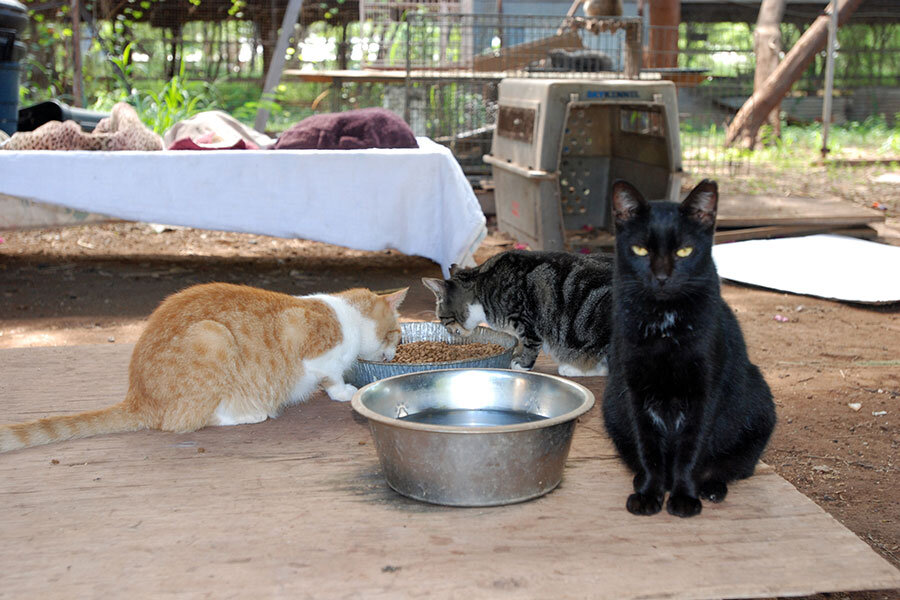Hawaii seal concerns pit cat lovers against conservationists
Loading...
Hawaii's stray cat population lies at the center of a heated debate between two camps of animal lovers in the Aloha State. On one side are conservationists who are calling to euthanize some of the hundreds of thousands of feral cats whose feces are thought to be spreading a disease that is killing Hawaiian monk seals. These marine mammals are among the most endangered in the world.
On the other side of the debate are cat lovers who take issue with killing one animal for the sake of another.
"It's a very difficult, emotional issue," said state Sen. Mike Gabbard, chairman of a committee that earlier this year proposed a ban on feeding stray cats on state land. The proposal was abandoned after strong objections. "It struck a nerve in our community," Senator Gabbard said.
Hawaii is facing an explosion of stray cats, as they have no predators in the state. By the 2015 estimates of the Hawaiian Humane Society, there are about 300,000 feral cats on the island of Oahu alone. The problem is that the cats carry a common bacterial parasite that, they say, threatens the seals. The same bacteria is thought to have killed California sea otters, and is largely responsible for the extinction of the Hawaiian crow, the ʻalalā, in the wild.
The National Oceanic and Atmospheric Administration estimates that these toxic cat feces have killed eight Hawaiian monk seals since 2001, five females and three males, who have ingested contaminated water or prey.
"While eight seals may not sound like a lot of animals, it actually has pretty large ramifications for an endangered population where there's only about 1,300 seals in existence," said Michelle Barbieri, a veterinary medical officer for NOAA's Hawaiian monk seal research program.
Since cats are not native to Hawaii – they were brought in – the NOAA program is pushing for a way to shrink their population, either through adoption or through what a NOAA coordinator describes as "humane euthanization."
"As conservationists, what we really have to look at is this is what Hawaii's native ecosystem includes, and cats are unfortunately not part of that," said Angela Amlin, NOAA's acting Hawaiian monk seal recovery coordinator.
That doesn’t mean Hawaii should kill cats, say animal welfare advocates. In a response to the state Senate bill, Hawaiian Humane Society President and chief executive Pamela Burns wrote that she opposes a "hierarchy in which the protection of certain animals comes at the suffering of others."
She and other animal welfare advocates decry euthanasia for healthy felines. "What we ... don't advocate is the wholesale killing, the extermination, of one species" for another, said Alicia Maluafiti, the board president of animal welfare group Poi Dogs and Popoki.
Trapping, neutering, and spaying to help control the cat population are reasonable solutions to the problem, say cat supporters.
This report uses material from the Associated Press.






